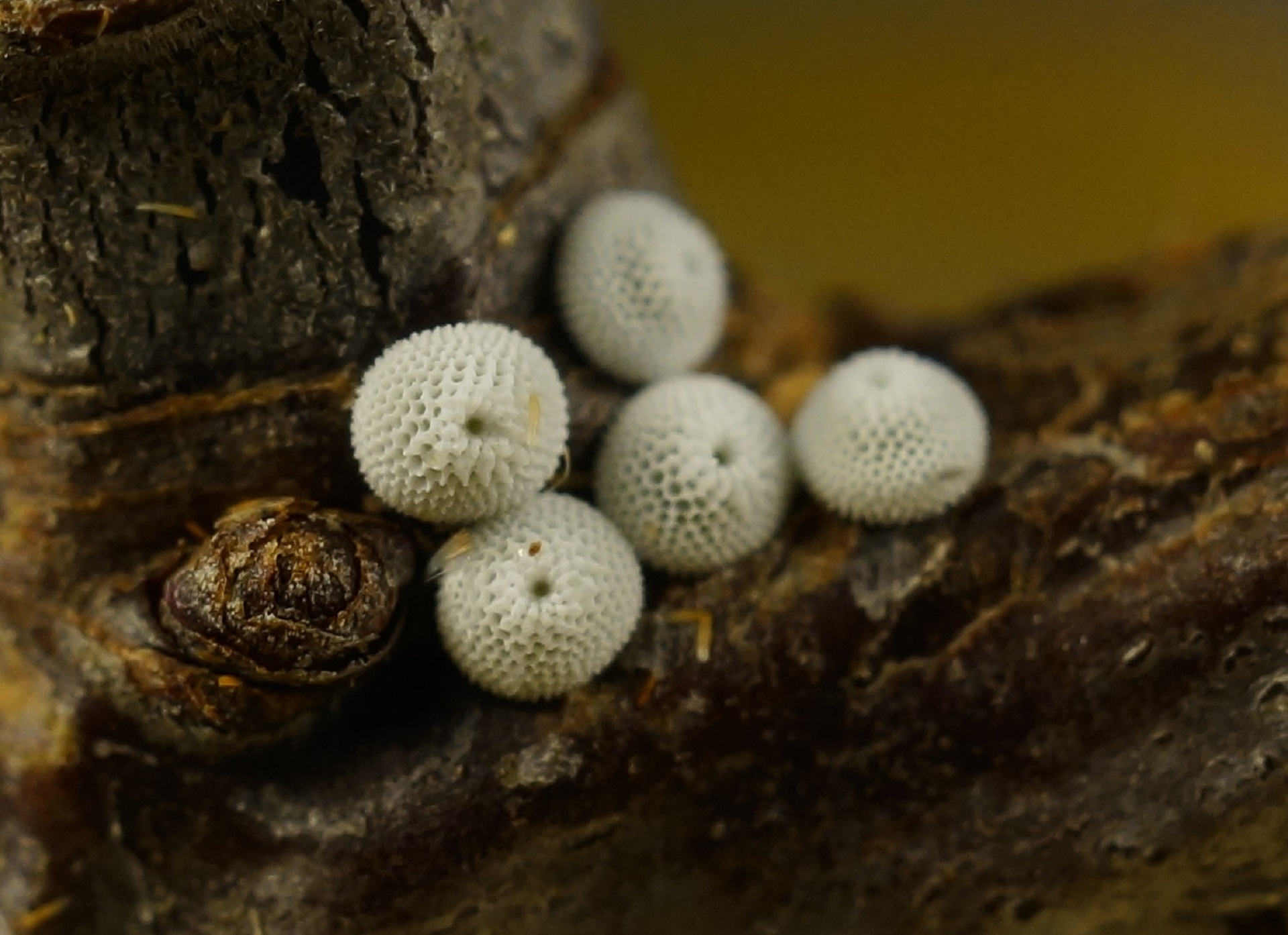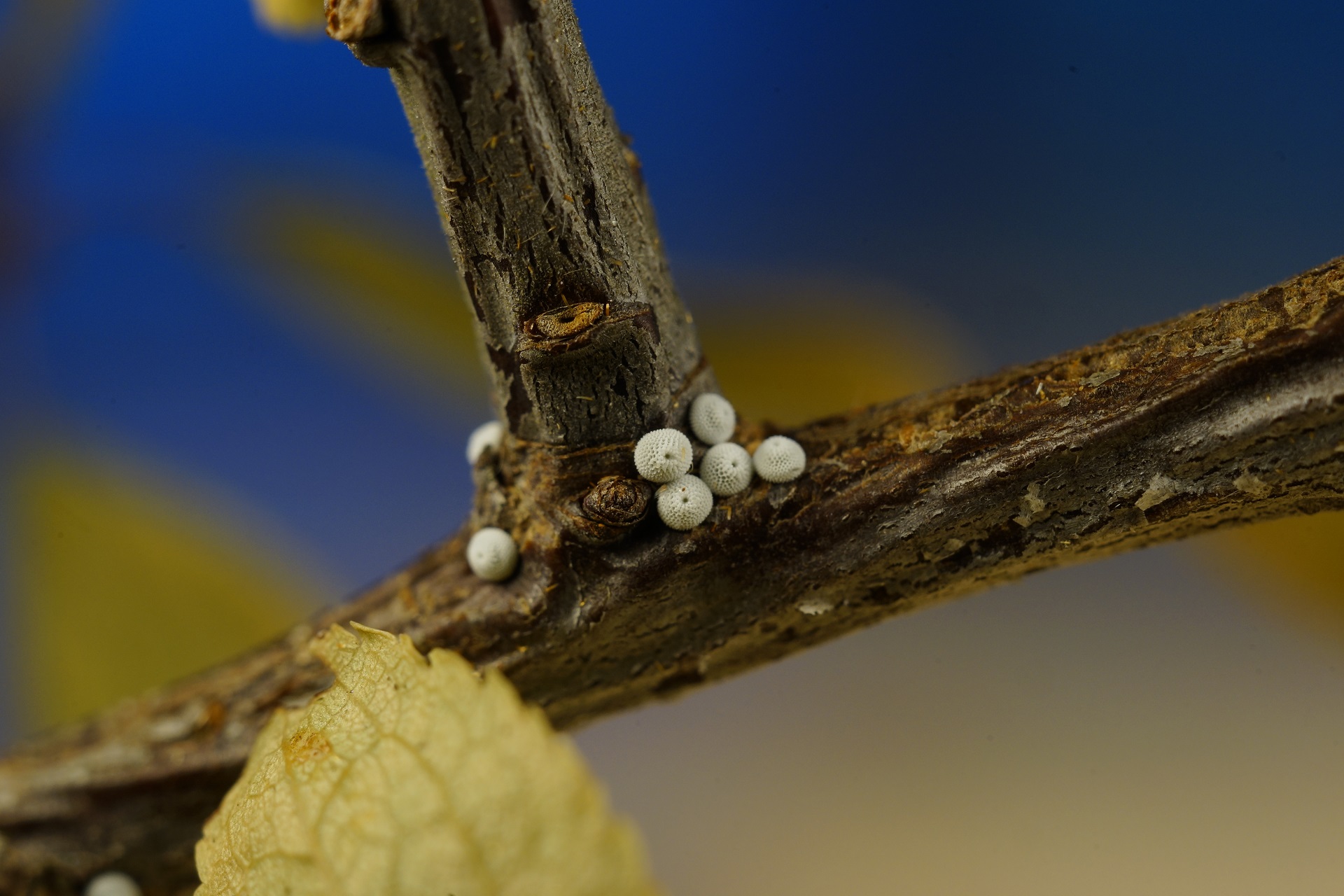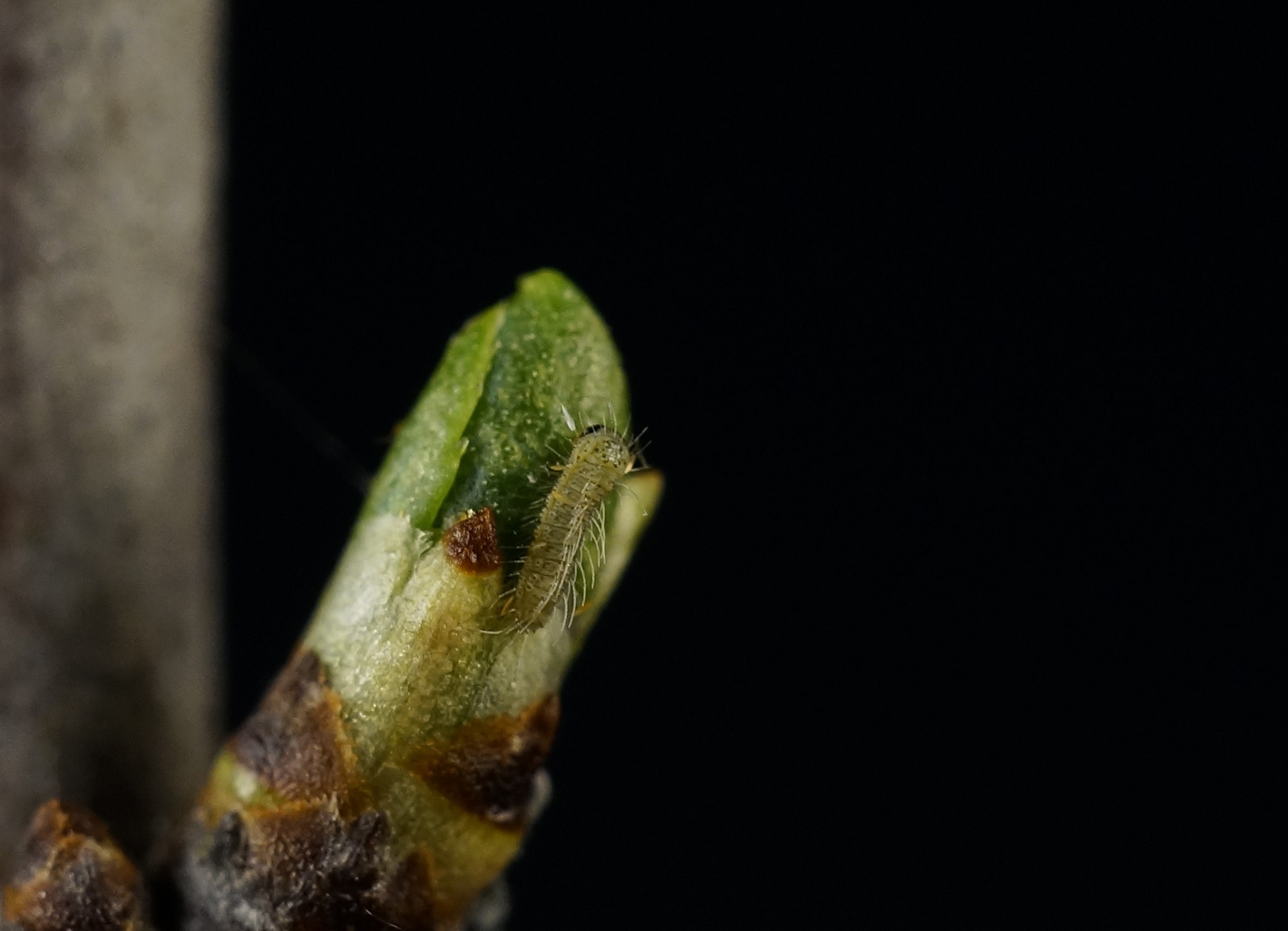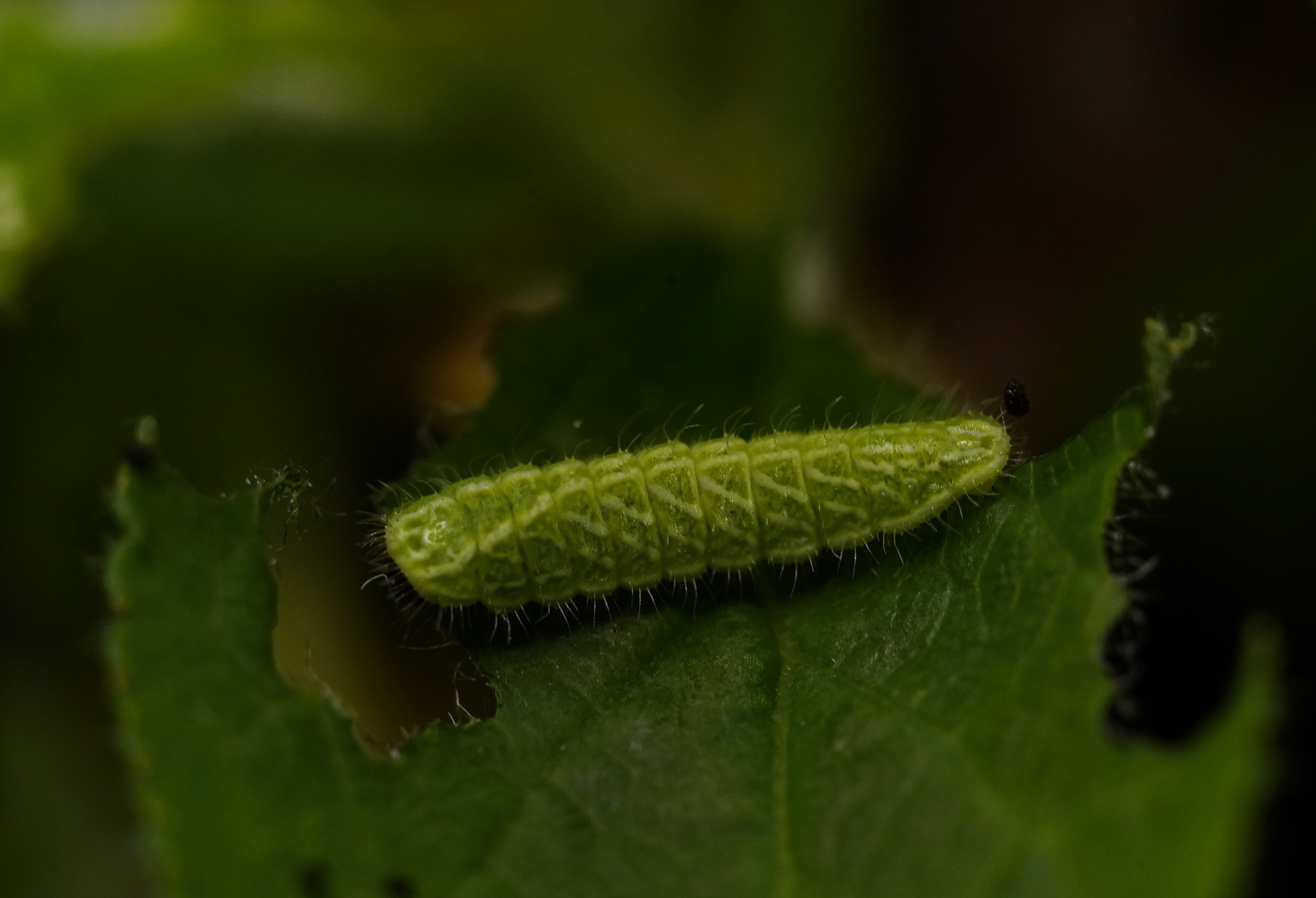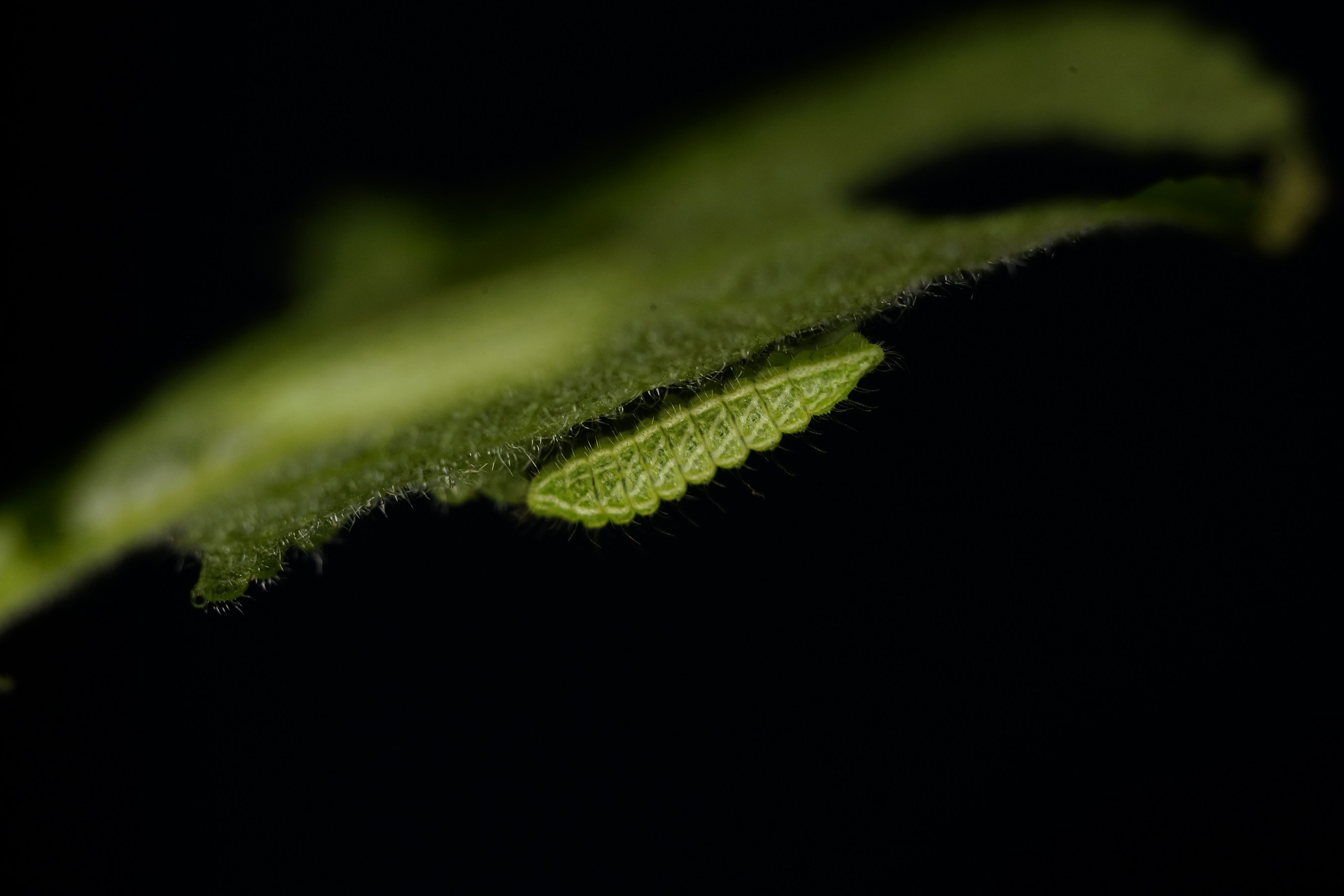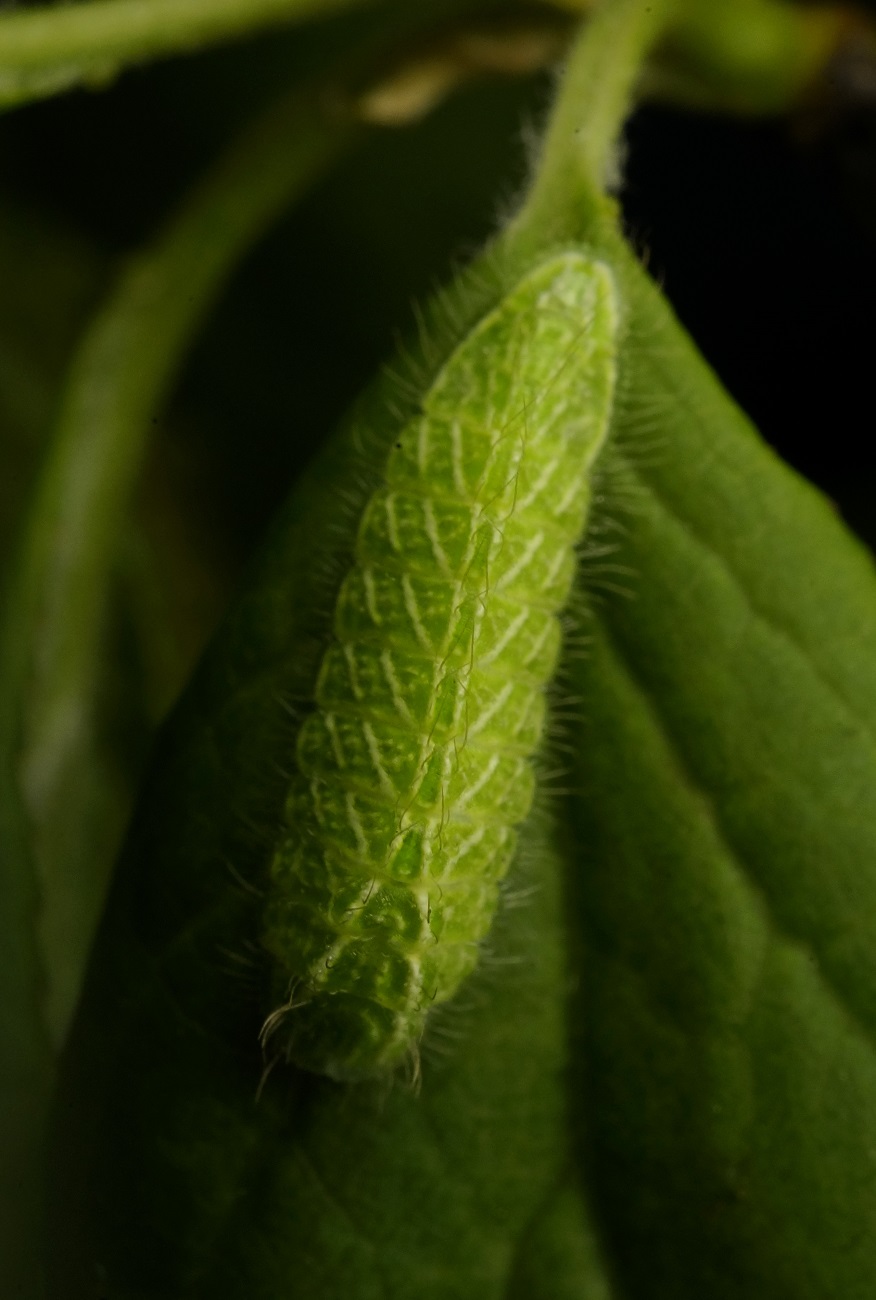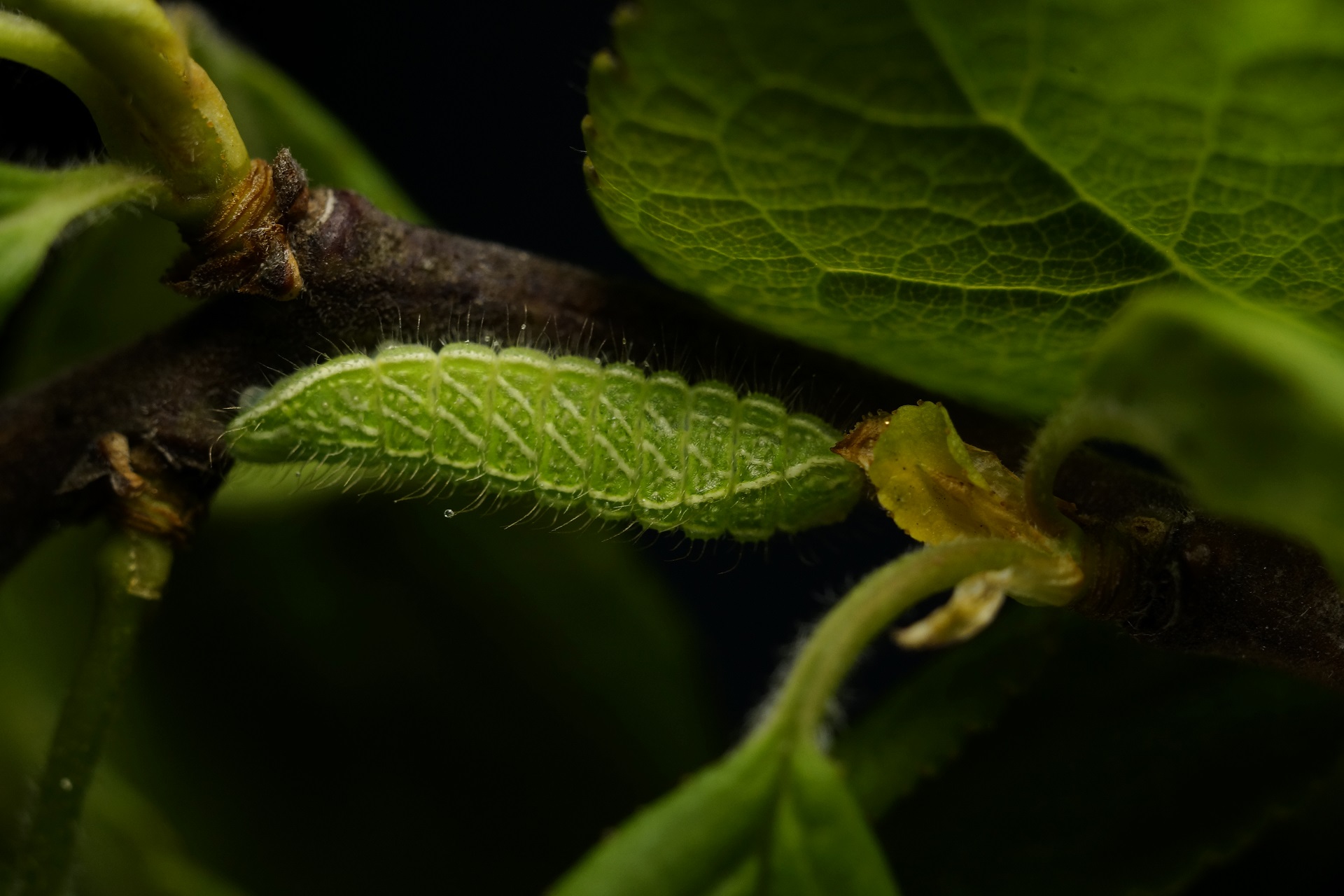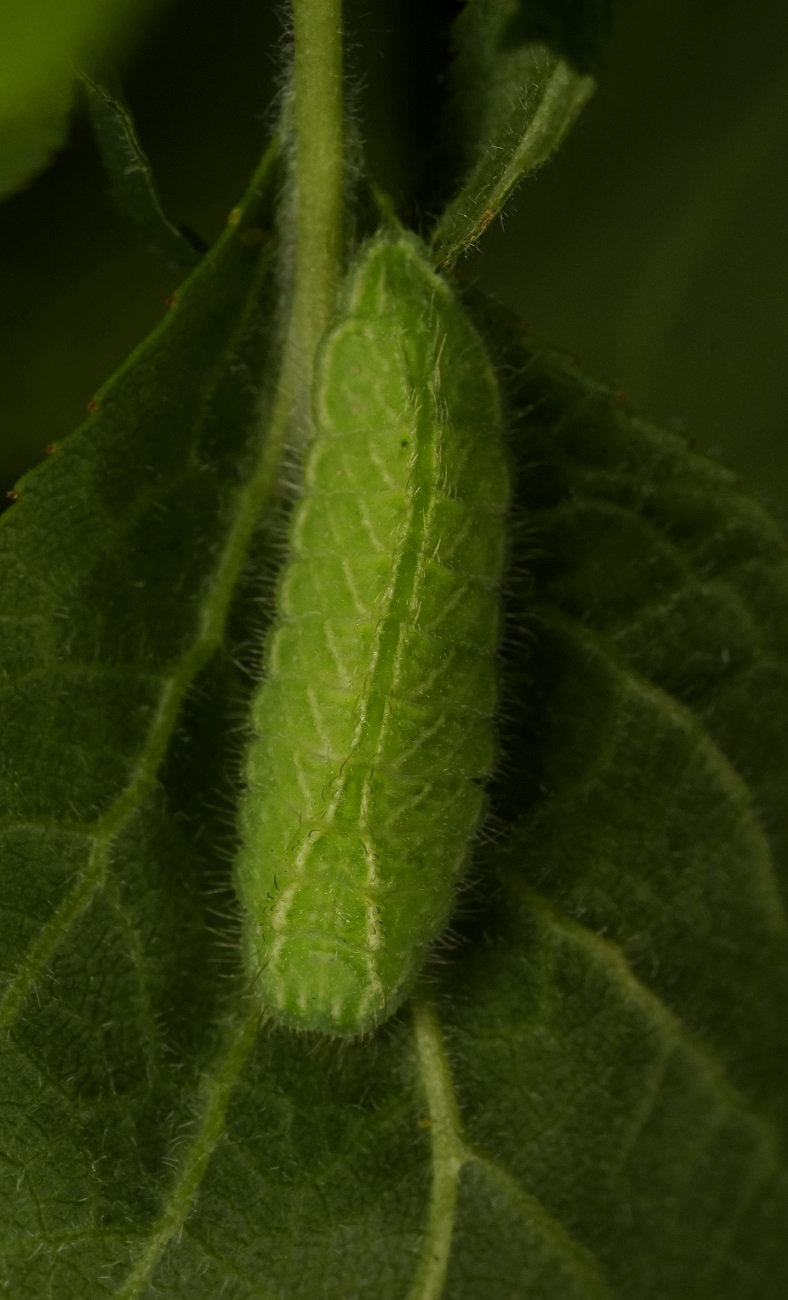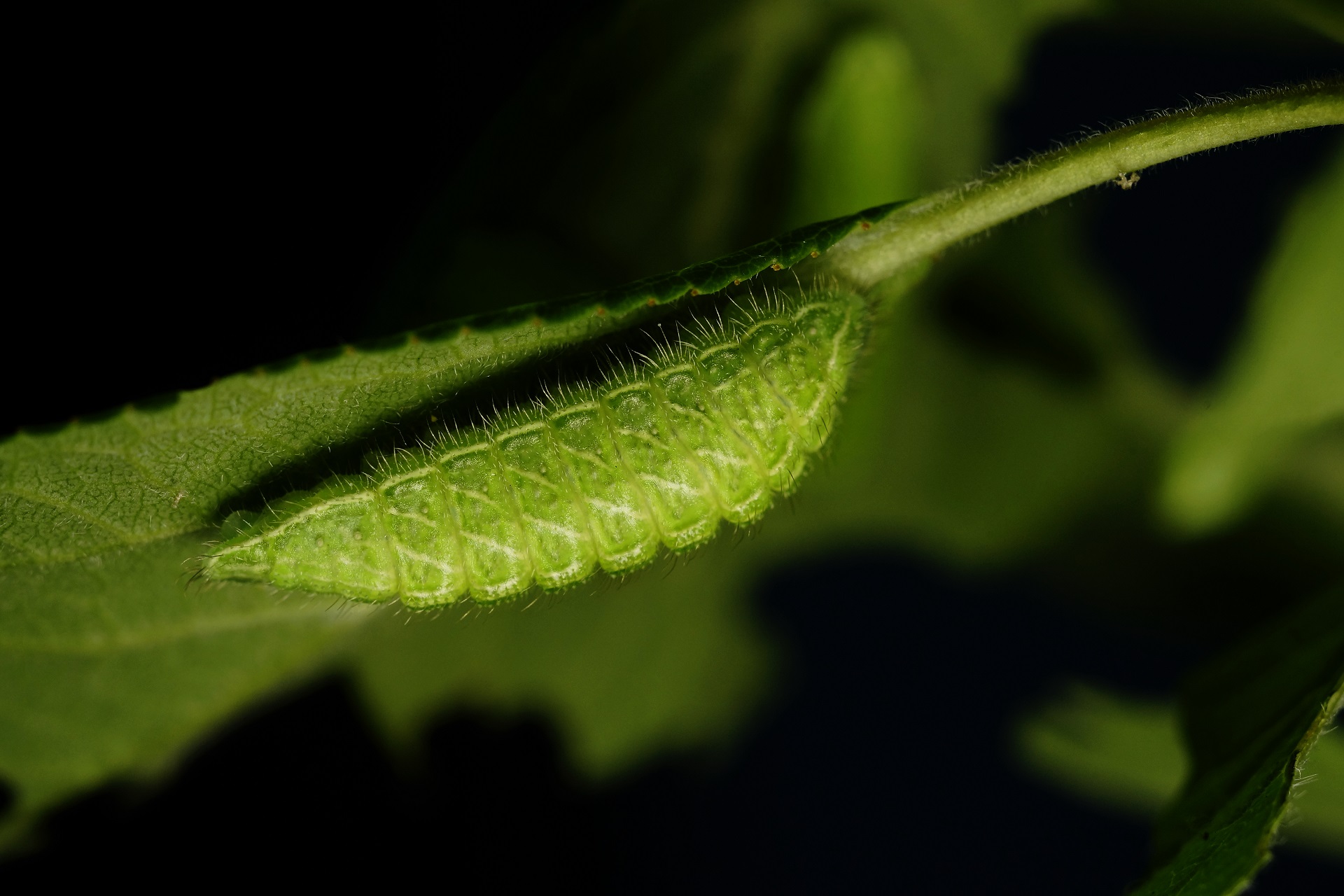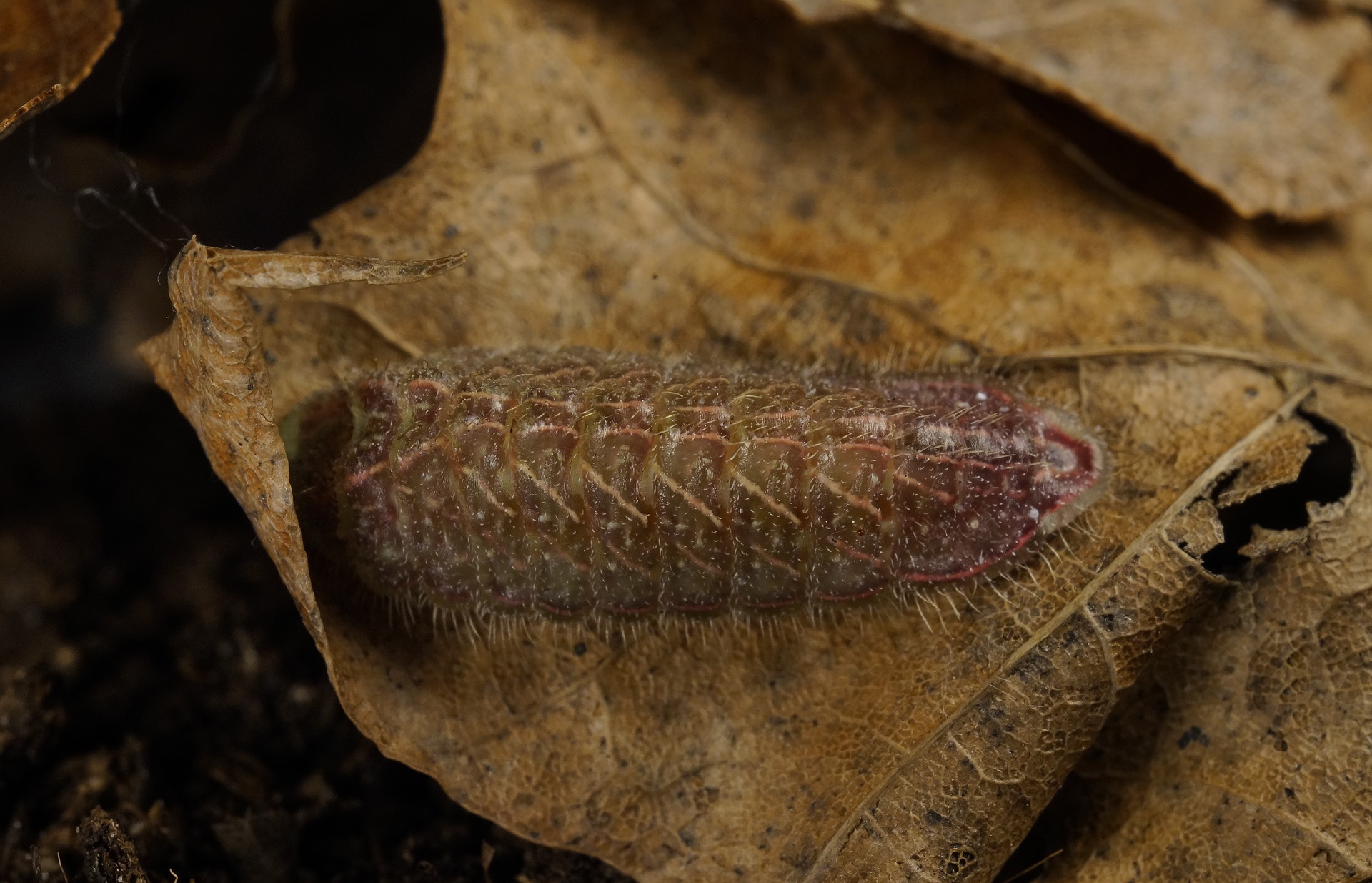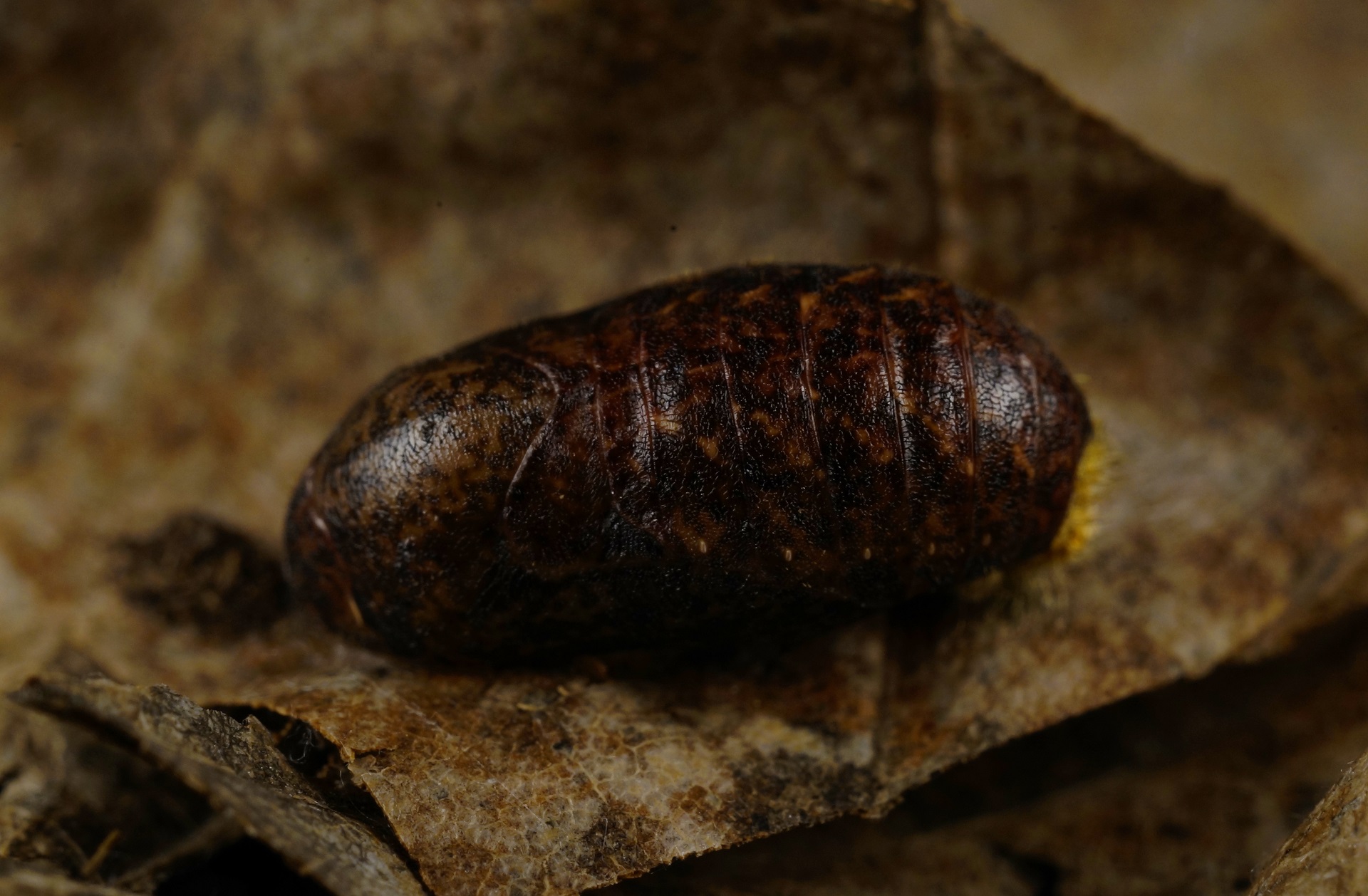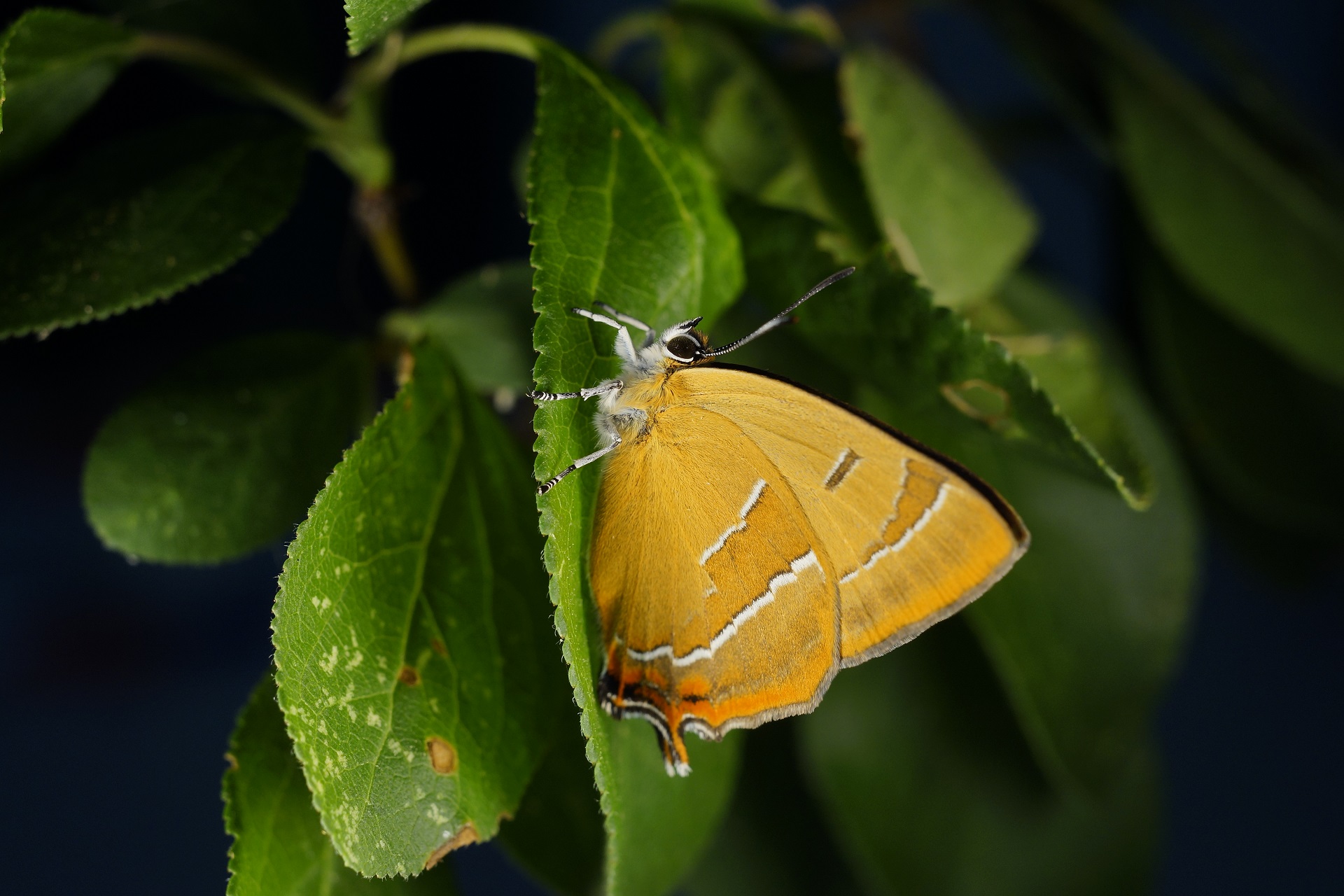Thecla betulae
Hostplant: Prunus spinosa and Prunus domestica. I used the latter in my breeding.
Lifecycle and behavior: The female lay the eggs at the base of young growing branches, usually 1-2 year old branches. In captivity the female would lay several eggs clustered together, but in the wild its normal that she just lays singular eggs, or sometimes two eggs together. The eggs hibernate and hatch in spring in coherence with the sprouting of the hostplant. I kept the eggs outside in natural conditions during winter and they hatched from 1st-7th of May. The newly hatched larva feed on the sprouting leaf buds, later feeding on the leaves and the developing fruits. The larval stages lasted about 4 weeks and they molted 3 times. The larva is green and camouflage well within the leaves. When ready to pupate it changes color to a brown-redish color and walks off the hostplant to find a place to pupate in the soil or leaf litter on the ground. The pupal stages lasted about 3 weeks. The adults fly during summer in one generation, usually from late July into September.

